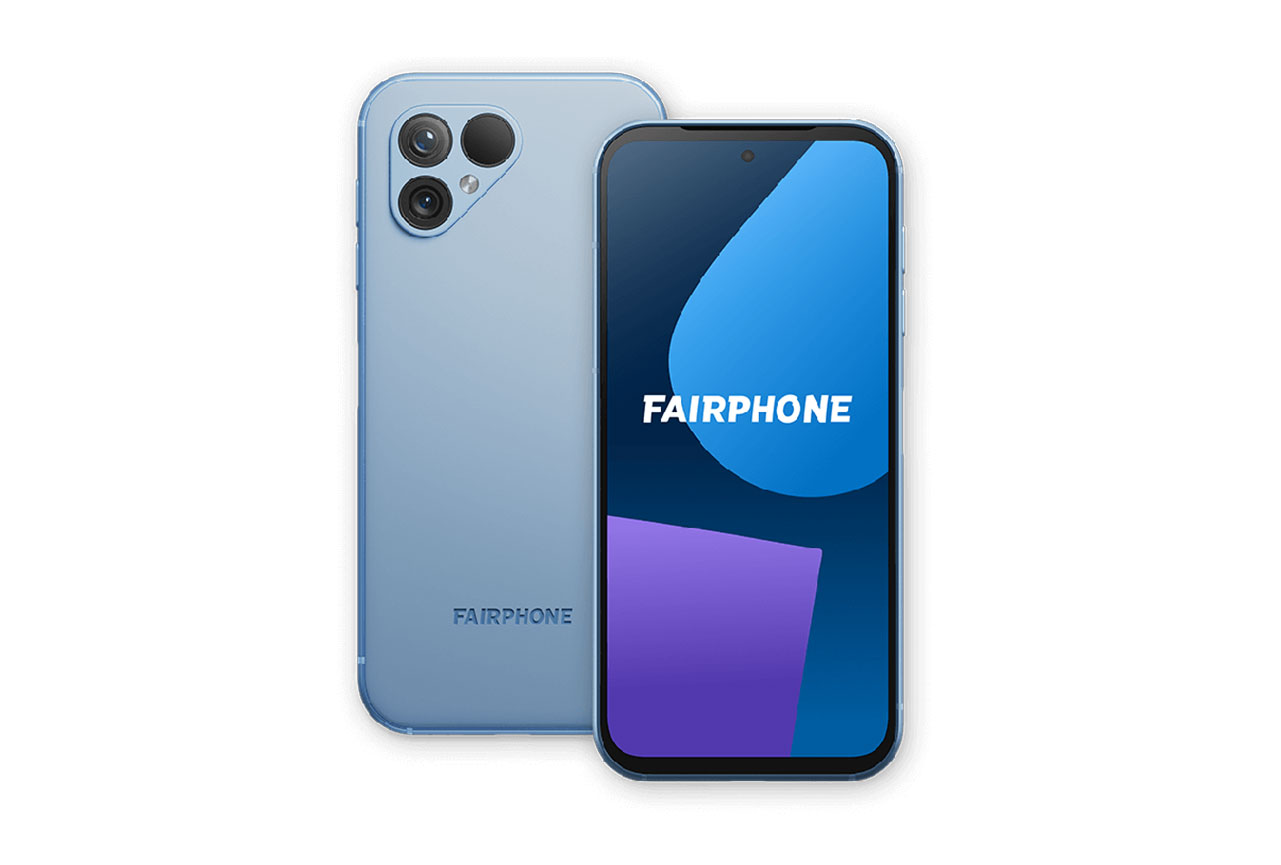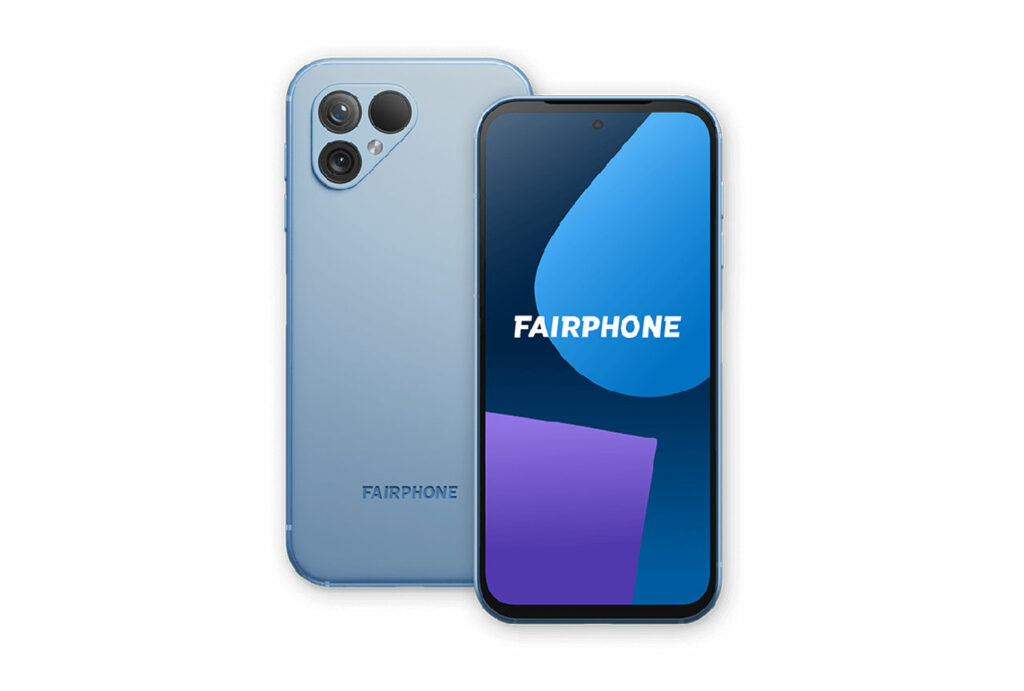We put the Fairphone 5 through our rigorous DXOMARK Battery test suite to measure its performance in autonomy, charging and efficiency. In these test results, we will break down how it fared in a variety of tests and several common use cases.
Overview
Key specifications:
- Battery capacity: 4200 mAh
- 30W charger (not included)
- 6.46-inch, 1224 x 2700, 90 Hz, OLED display
- Qualcomm QCM6490 (6 nm)
- Tested ROM / RAM combination: 256 GB + 8 GB
Scoring
Sub-scores and attributes included in the calculations of the global score.

Fairphone 5


Key performances
These key points are derived from the lab measurements during testing and do not figure into the overall score. The lab measurements, however, are used for the overall score.
 167th
167th
 35th
35th
Pros
- Great overall charging efficiency
- Low residual power drain whether or not the device is still plugged in or not
Cons
- Less than two days of autonomy in moderate use
- Battery drains very fast in outdoor test scenarios, except for calling
- Poor autonomy regained from 5-minute quick charge
- High discharge currents when idling with screen on, gaming and streaming videos
Fairphone 5’s overall battery performance landed in the bottom half of our database, despite showing an impressive charging efficiency.
Powered by a 4200 mAh battery, the device’s autonomy lasted more than a day and half after being used moderately, a result that was at the lower end of our database. When evaluated in individual test cases, the Fairphone 5 was behind most other devices in our database. But its autonomy was relatively decent when idling with the screen off, or when streaming music or video in 4G, compared to other test cases. In outdoor testing, the Fairphone 5’s autonomy put in a commendable performance in the calling use case, even though it still ranked toward the bottom half of our database. Other outdoor use cases were also behind other devices’ performances.
The Fairphone 5 supports a wide range of charging adapters and cables that are currently available on the market, but we used the original Fairphone charger and cable for our evaluations. It took 2 hours and 19 minutes to fully replenish the device’s battery. A quick 5-minute charging boost yielded an additional 2 hours and 12 minutes of autonomy, which fell short when compared with most devices we have tested.
The Fairphone 5 showed its strength in charging efficiency, which was measured at an impressive 77.6%, signifying that less than a quarter of the energy is lost during a full battery charge. This positions the device in the top half among those we tested. Additionally, the residual power drain, whether the device was plugged in or not, was relatively low. The discharging currents of the Fairphone 5, however, were generally higher than those of most other devices we tested, except for scenarios like idling with screen off and streaming music.
When compared to other devices in the Premium segment, the Fairphone 5 finds itself in the lower half because of the weak performances in autonomy and charging.
Test Summary
About DXOMARK Battery tests: For scoring and analysis in our smartphone battery reviews, DXOMARK engineers perform a variety of objective tests over a week-long period both indoors and outdoors. (See our introductory and how we test articles for more details about our smartphone Battery protocol.)
The following section gathers key elements of our exhaustive tests and analyses performed in DXOMARK laboratories. Detailed performance evaluations under the form of reports are available upon request. Do not hesitate to contact us.
| Battery | Charger | Wireless | Display | Processor | |
|---|---|---|---|---|---|
| Fairphone 5 | 4200mAh | 30W (not included) |
- | AMOLED 1224 x 2700 |
Qualcomm QCM6490 |
| Google Pixel 7a | 4385mAh | 18W (not included) |
- | OLED 1080 x 2400 |
Google Tensor G2 |
| Samsung Galaxy A54 5G | 5000mAh | 25W (not included) |
- | AMOLED 1080 x 2400 |
Exynos 1380 |
Autonomy
Fairphone 5
195
Autonomy score is composed of three performance sub-scores: Home / Office, On the go, and Calibrated use cases. Each sub-score comprises the results of a comprehensive range of tests for measuring autonomy in all kinds of real-life scenarios.
Battery Life (moderate)
 168th
168th
Battery Life (moderate)
 36th
36th

Home/Office
Fairphone 5
221
A robot housed in a Faraday cage performs a set of touch-based user actions during what we call our “typical usage scenario” (TUS) — making calls, video streaming, etc. — 4 hours of active use over the course of a 16-hour period, plus 8 hours of “sleep.” The robot repeats this set of actions every day until the device runs out of power.

On the go
Fairphone 5
195
Using a smartphone on the go takes a toll on autonomy because of extra “hidden” demands, such as the continuous signaling associated with cellphone network selection, for example. DXOMARK Battery experts take the phone outdoors and perform a precisely defined set of activities while following the same three-hour travel itinerary (walking, taking the bus, the subway…) for each device

Calibrated
Fairphone 5
198
For this series of tests, the smartphone returns to the Faraday cage and our robots repeatedly perform actions linked to one specific use case (such as gaming, video streaming, etc.) at a time. Starting from an 80% charge, all devices are tested until they have expended at least 5% of their battery power.
Charging
Fairphone 5
218
Charging is fully part of the overall battery experience. In some situations where autonomy is at a minimum, knowing how fast you can charge becomes a concern. The DXOMARK Battery charging score is composed of two sub-scores, (1) Full charge and (2) Quick boost.

Full charge
Fairphone 5
224
Full charge tests assess the reliability of the battery power gauge; measure how long and how much power the battery takes to charge from zero to 80% capacity, from 80 to 100% as shown by the UI, and until an actual full charge.
Charging Time 0-80%
 144th
144th
Charging Time 0-80%
 37th
37th

Quick boost
Fairphone 5
212
With the phone at different charge levels (20%, 40%, 60%, 80%), Quick boost tests measure the amount of charge the battery receives after being plugged in for 5 minutes. The chart here compares the average autonomy gain from a quick 5-minute charge.
Efficiency
Fairphone 5
154
The DXOMARK power efficiency score consists of two sub-scores, Charge up and Discharge rate, both of which combine data obtained during robot-based typical usage scenario, calibrated tests and charging evaluation, taking into consideration the device’s battery capacity. DXOMARK calculate the annual power consumption of the product, shown on below graph, which is representative of the overall efficiency during a charge and when in use.

Charge up
Fairphone 5
205
The charge up sub-score is a combination of four factors: the overall efficiency of a full charge, related to how much energy you need to fill up the battery compared to the energy that the battery can provide; the efficiency of the travel adapter when it comes to transferring power from an outlet to your phone; the residual consumption when your phone is fully charged and still plugged into the charger; and the residual consumption of the charger itself, when the smartphone is disconnected from it. The chart here below shows the overall efficiency of a full charge in %.

Discharge
Fairphone 5
194
The discharge subscore rates the speed of a battery’s discharge during a test, which is independent of the battery’s capacity. It is the ratio of a battery’s capacity divided by its autonomy. A small-capacity battery could have the same autonomy as a large-capacity battery, indicating that the device is well-optimized, with a low discharge rate.



DXOMARK encourages its readers to share comments on the articles. To read or post comments, Disqus cookies are required. Change your Cookies Preferences and read more about our Comment Policy.